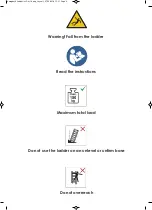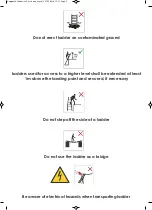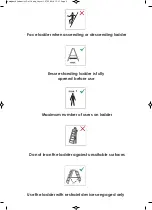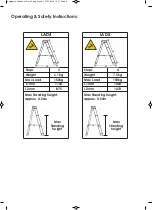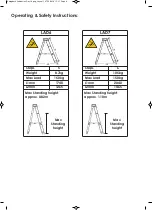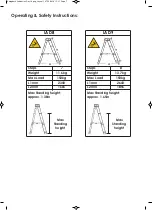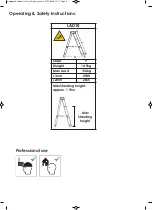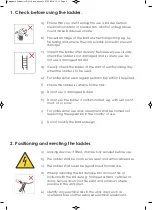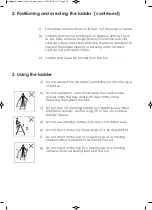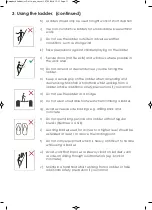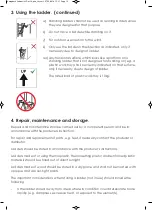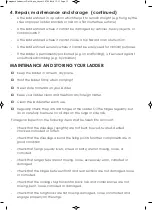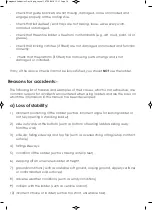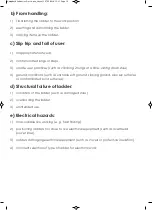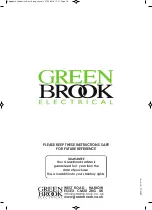
- check that guide brackets are not missing, damaged, loose or corroded and
engage properly on the mating stile.
- check that ladder feet / end caps are not missing, loose, excessively worn,
corroded or damaged.
- check that the entire ladder is free from contaminants (e.g. dirt, mud, paint, oil or
grease).
- check that locking catches (if fitted) are not damaged or corroded and function
correctly.
- check that the platform (if fitted) has no missing parts or fixings and is not
damaged or corroded.
If any of the above checks cannot be fully satisfied, you should
NOT
use the ladder.
Reasons for accidents:-
The following list of hazards and examples of their causes, which is not exhaustive, are
common reasons for accidents encountered when using ladders and are the basis on
which the information in this manual has been developed:
a) Loss of stability:
1) Incorrect positioning of the ladder (such as incorrect angle for leaning ladder or
not fully opening a standing ladder).
2) slide outwards at the bottom (such as bottom of leaning ladders sliding away
from the wall).
3) side slip, falling sideways and top flip (such as overreaching or fragile top contact
surface).
4) falling sideways.
5) condition of the ladder (such as missing anti-slip feet).
6) stepping off an unsecured ladder at height.
7) ground conditions (such as unstable soft ground, sloping ground, slippery surfaces
or contaminated solid surfaces).
8) adverse weather conditions (such as windy conditions).
9) collision with the ladder (such as vehicle or door).
10) incorrect choice of ladder (such as too short, unsuitable task).
Swingback Ladder Ins Dec 18.qxp_Layout 1 07/12/2018 13:31 Page 14


